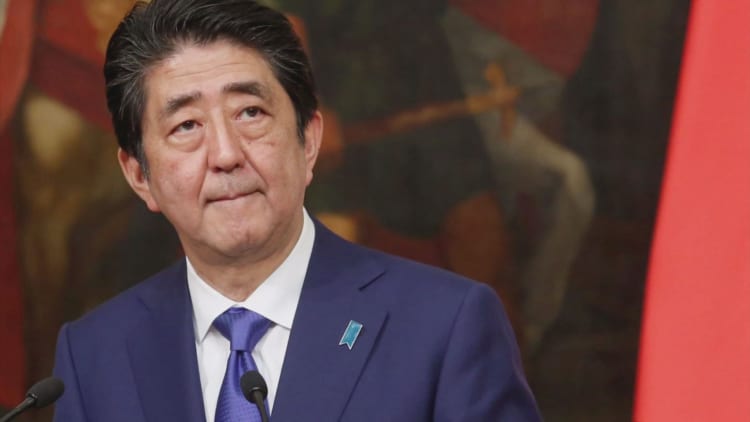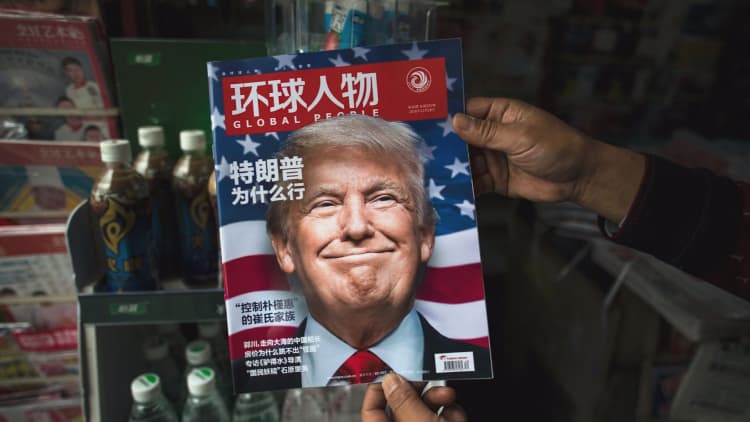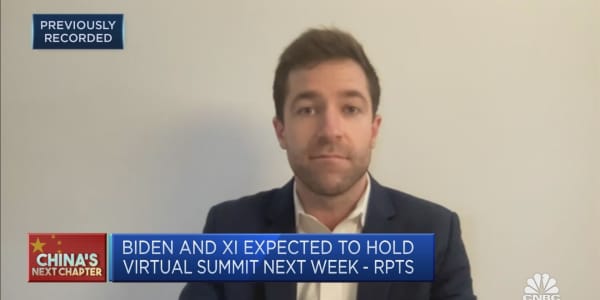
OKINAWA-While the world watches mounting military tensions in the South China Sea, another,
The situation increases the risk of an accidental confrontation — and could draw other countries, like the United States, into a conflict. It's a topic President Trump will likely bring up with Chinese President Xi Jinping at his Mar-a-Lago estate this week.
From the departure lounge at Naha International Airport on the Japanese island of Okinawa, passengers can easily see what's going on. Between the regular comings and goings of commercial airliners, first one, then two, then two more F-15 fighter jets streak down the runway that Japanese Air Self Defense Forces (JASDF) share with Naha's regular airline traffic. Rising rapidly from the tarmac, the quartet of combat aircraft heads out to sea to intercept yet another Chinese military aircraft — usually other fighter jets, sometimes a bomber or reconnaissance plane — flying into or close to Japanese airspace.
Such airborne intercepts are on the rise over the East China Sea, with Japan now averaging roughly two intercepts of Chinese aircraft per day since April of last year, nearly twice as many as in the 12 months prior. In response to the uptick in Chinese military activity in airspace Japan considers its responsibility, JASDF has doubled the number of fighter aircraft at its Naha Air Base, adding a second squadron of F-15Js — the Japanese version of the U.S.-made F-15 fighter jet — in January of last year.
The increased intrusion of Chinese military air traffic into airspace protected by the JASDF, along with the uptick in aerial intercepts, heightens the risk of an accident or misunderstanding between the two militaries — a situation that could rapidly escalate, given the already heightened military tensions in the region. Such an incident, intentional or not, could quickly spiral, potentially drawing U.S. forces in the region into the fray.
Rising tensions
"They've routinized their intrusions into our territorial sea space," says
From April to December of last year, Japanese fighter jets scrambled to intercept Chinese aircraft 644 times (Japan's fiscal year runs April 1 to March 31 of the following year). While Japan has not yet released total figures for fiscal 2016, Ministry of Defense officials briefing CNBC on the matter maintain that the tempo of airborne intercepts continues to increase, as it has every year since 2008.
JASDF forces haven't intercepted this many aircraft since the busiest days of the Cold
Today tensions in the region are heightened by new catalysts, primarily overlapping territorial claims in the East and South China seas, the lingering threat of military action on the Korean Peninsula, and an increasingly capable Chinese military that seeks to secure its near-abroad rivals through a mix of air and sea power. Neighboring U.S. allies, like South Korea,
A political hot button
On Okinawa — home to several major U.S. military installations as well as a meaningful contingent of Japan's
The Senkaku Islands (known as the Diaoyu Islands to China), located some 225 nautical miles west of the main island of Okinawa and just 90 miles north of the Japanese island of Ishigaki, are claimed by both countries, creating an ambiguous security situation as both nations' militaries attempt to administer the uninhabited
In recent years, the Senkakus have become a political hot button for both nations, stirring nationalism on both sides while driving a cautious approach by a Japanese government eager to avoid open confrontation with China. Following an incident near the Senkakus in September of 2010, when a Chinese fishing trawler deliberately rammed a Japanese Coast Guard ship, Japan claims it has taken a soft approach, urging Japanese fishermen to steer clear of the islands even as Chinese ships continue to ply the waters around the Senkakus.
Flexing military muscle
China has openly said it aims to secure access to the Western Pacific beyond what's known as the "first island chain" — the string of islands stretching from the Japanese archipelago to Taiwan to the Philippines and across the southern fringe of the South China Sea, all the way to the Malay Peninsula. Ultimately, China aims to extend its military reach into the South China Sea and Western Pacific in such a way that it can effectively control who can — and cannot — enter those regions, analysts say.
But increased Chinese military activity in the East China Sea could prove to be the by-product of more specific aims.
"Our observation is that China is trying to develop the capabilities of their various aircraft in the Western Pacific Ocean,"
"'First island chain' is a term created by the U.S
China is trying to develop the capabilities of their various aircraft in the Western Pacific Ocean.Yurie Mitsuideputy director of intel at the Japanese Ministry of Defense
It's a troubling addendum, suggesting that while territorial disputes and Chinese military activity in the East China Sea often take a backseat to more provocative island-building and military exercises in the South China Sea, the issues underpinning Chinese military activities along its eastern coastline are in some sense more volatile. China considers democratic Taiwan a breakaway province and has vowed to bring it back under mainland Chinese rule. Doing so isn't just a matter of geopolitical strategy or economic necessity, but a matter of nationalistic pride for many Chinese citizens and the ruling communist party.
The Taiwan card
As the Trump administration reportedly crafts a major new military arms package for Taiwan to help the island deter a rising Chinese military, Chinese Defense Ministry spokesperson Wu Qian told a press briefing last week that "it is futile to use weapons to refuse unification, and is doomed to have no way out."
President Trump will host Chinese President Xi Jinping at his Mar-a-Lago estate April 6–7, and security issues concerning North Korea and South China Sea will undoubtedly fill out the top of the agenda. Whether or not Taiwan or issues related to the East China Sea come up will be telling for those in Japan watching closely for clues as to how the new administration's relationship with China is likely to play out.
With the Trump administration still trying to find its feet after a shaky first two months in office, China could look to press a perceived advantage in the Western Pacific, says Dr. Akio Takahara, an expert on Chinese politics and professor in the graduate school of law and politics at the University of Tokyo.
"The Chinese are always looking at what the Americans do," he says. "So when the Americans aren't doing well, they think they are doing very well."
— By Clay Dillow, special to CNBC.com
WATCH: Why Trump's foreign policy is on a collision course in the South China Sea





